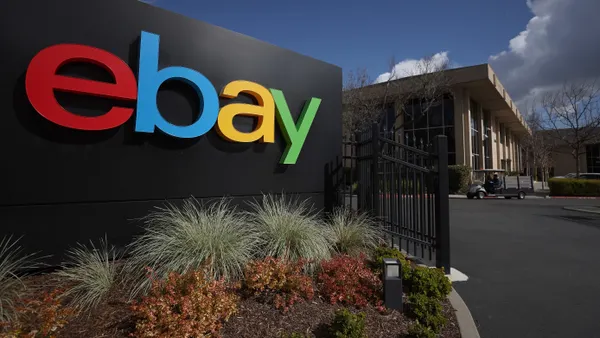Dive Brief:
-
Global retail spending on artificial intelligence will grow to $7.3 billion per year by 2022, up from an estimated $2 billion in 2018, according a study from Juniper Research.
-
In coming years, retailers will spend heavily on AI tools that will enable them to differentiate and improve the services they offer customers. These will include automated marketing platforms that generate tailored, timely offers, and chatbots that provide instant customer service.
- The increase comes as retailers target new ways of boosting personalization of the customer experience.
Dive Insight:
Retailers are planning to spend more on AI, with customer service and sentiment analytics receiving the most attention, Juniper found in its most recent research. A key tool for retailers seeking to improve their customer experience will be applying AI to understand customer reaction to the products purchased and the service received.
Juniper predicts that retailers will use AI insights to design and target new products and to create promotional offers. "Retailers are looking to replicate the success of Amazon in making AI a core part of their operations, with retailers increasingly turning to solutions such as AI-optimized pricing and discounting, as well as demand forecasting," said research author Nick Maynard.
Breaking down retail spending in 2022 (the target year for this study), three types of technology tools lead the list: customer service and sentiment analytics by 54%, AI-based automated marketing by 30% and demand forecasting by 16%.
AI-backed demand forecasting is rapidly becoming a key tool for retailers. For example, major, specific shopping days like the Black Friday phenomena, make understanding customer demand and correct planning more important than ever.
To remain competitive, retailers must invest in this area, particularly in low-margin retail segments, according to Juniper. While the cost of AI tools is currently uneconomical for many companies, it will drop by 8% over the next four years, helping to increase software spend by the estimated 300%.
"AI has a huge transformative potential for retailers, in a way that is difficult to underestimate, a potential based on changes underway in the retail industry, which are making AI more applicable all the time," Juniper noted in a whitepaper.
With the rise of the internet, many thought that physical stores would become outmoded and irrelevant, but this has not occurred, although some retailers are under pressure by the rise of e-commerce. Many are, of course, with Toys R Us entering bankruptcy protection last fall as a prime example, while still others are expanding their physical presence including many direct-to-consumer brands.
Against the backdrop of retail uncertainty, it's a popular narrative that retail businesses are dying, but this is an overestimation. "Many retailers are performing well. While consumers are open to buying certain items online, particularly goods such as books, music and video games, which are often at more competitive prices than in-store, many consumers prefer to see the item they are buying," noted Juniper. "This is particularly true in the clothing, furniture and grocery segments."











